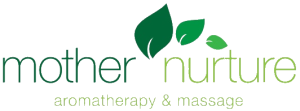Most people are familiar with the aroma of lavender. But do you know exactly what you are smelling? Did you know there are many different varieties of Lavender?
Lavender played a big role in the advent of aromatherapy as we know it today. The term Aromatherapie was first coined by a French cosmetic chemist Renee Maurice Gattefosse in the 1920’s. The story goes he badly burnt his hand in his laboratory and quickly plunged it into a tub of lavender essential oil, the closest tub of liquid available. He was amazed to notice an immediate reduction in pain and that the burn healed quickly and left no scar. He wrote one of the first books on aromatherapy.
Lavender is one of the most researched essential oils, with lots of positive results. In particular it has been proven to help reduce anxiety and improve sleep. Studies and anecdotal evidence have also shown Lavender to be effective in reducing pain related to osteoarthritis, childbirth and burns. It’s cicatrisant (healing) and anti-inflammatory properties make it useful for wounds and skin problems such as eczema.
Lavandula, its botanical name, is derived from the Latin “lavare” meaning “to wash”, due to it’s use in perfuming baths and clothes.
What Lavender is that?
Years ago, I was one of a small group of aromatherapists invited to attend the annual Australian Lavender Growers Association (TALGA) lavender competition. It involved smelling many varieties of lavender essential oil from Australia and New Zealand and providing feedback on various parameters. Even as aromatherapists we were amazed at the complexity and variation in each essential oil.
There are many varieties of Lavender, but those that are readily available would usually fall into one of three categories. Your Lavender essential oil may be a Lavandula angustifolia, Lavandula latifolia or a hybrid of the two which is known as a Lavandin.
“True lavender” (Lavandula angustifolia) comes from the South of France, grown at 800 meters above sea level. However good quality Lavandula angustifolia is also produced in Bulgaria and Australia, and some other parts of the world.
Lavandula latifolia, also known as Spike lavender, has a different composition with a slightly camphoraceous odour.
Lavandins make up a large proportion of the lavender oil produced as they are hardier plants and have a much higher yield. Lavandins include Lavandin Grosso (my favourite), Abrial and Super acetate.
Lavender in action
Lavender essential oil has many uses. The type of lavender you have will dictate it’s use.
Lavandula angustifolia is balancing, soothing and calming, and the best option for children. It may be beneficial for insomnia, irritated skin, colds and wound healing. This lavender is the best “all-rounder”, non -toxic with a wide range of uses.
Lavandula latifolia is more stimulating and may be useful for muscular aches and cold and flu. Due to the camphor content it needs to be used with more caution. It’s not recommended for use with pregnancy, children and epilepsy.
There are many different versions of Lavandins, with their use dependant on their composition. Lavandins have the mixed properties of both of the above. I still like to use it for stress and anxiety, as well as muscular aches and pains. Lavender hydrosol, or floral water, is also very useful. Hydrosols are very gentle, containing just 0.5% of essential oil, so a wonderful safe option for children. Hydrosols can be used in sprays, baths or compresses neat on the skin.
Some of my favourite uses for lavender
💜Settle & sleep (True lavender)1-2 drops on a tissue and tuck into pyjamas or under pillow
Note: only small amounts needed, too much lavender can become stimulating
For children under 2 years, spray Lavender hydrosol onto bedding, or put the tissue near the cot but away from reach.
💜Minor burns and bites (True lavender)This is one case where you can use neat essential oil on the skin. After the usual first aid measures, apply 1-2 drops directly onto the burn or bite.
For children under 2 years, use Lavender hydrosol instead.
💜Tension headache related to stress (True lavender or Lavandin)
Dilute 5 drops Lavender essential oil into 10mls base oil. Massage into shoulders, neck, jawline and temples (careful with eyes).
💜Colds/sinusitis/hayfever (Spike Lavender)
Use 1-2 drops in a bowl of hot water as an inhalation. Alternatively, put 2-3 drops in the corner of the shower recess and inhale the vapours.
Suitable for adults only. Muscular aches (Spike Lavender or Lavandin)Dilute 10 drops Lavender essential oil into 10mls base oil. Massage into affected areas as needed.
For children 2-5 years: use True lavender and reduce dilution to 2-3 drops essential oil in 10mls of base oil.
